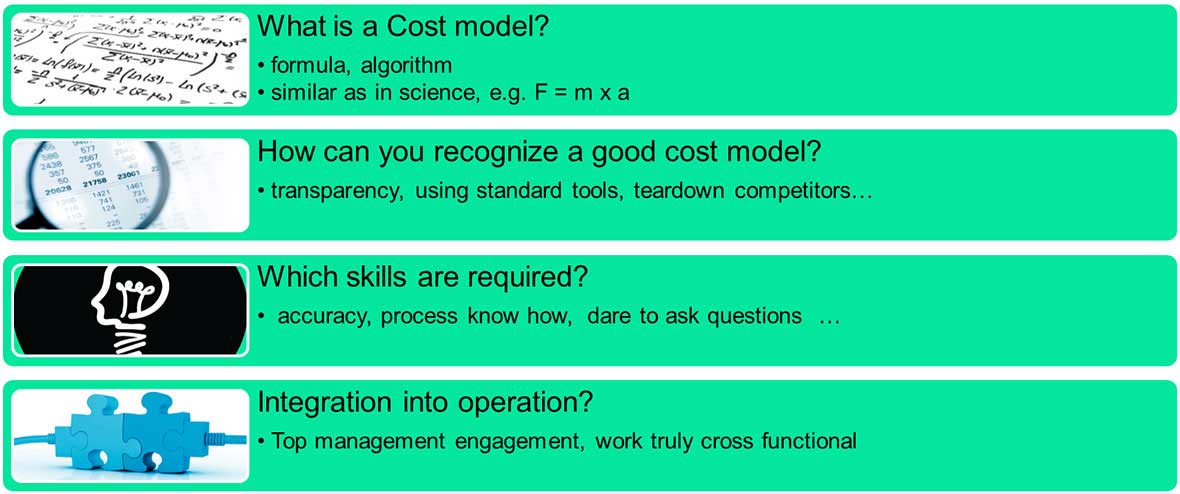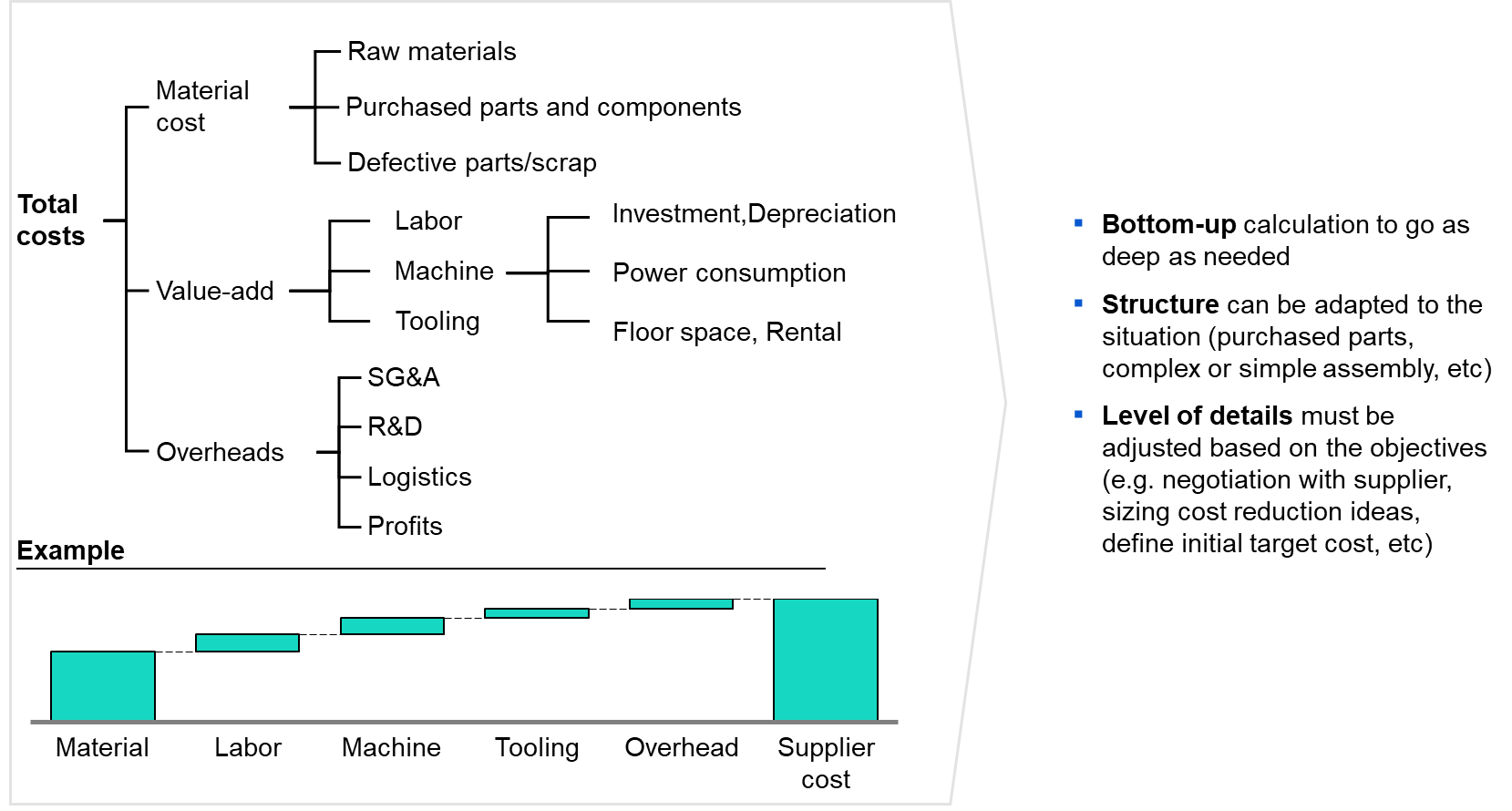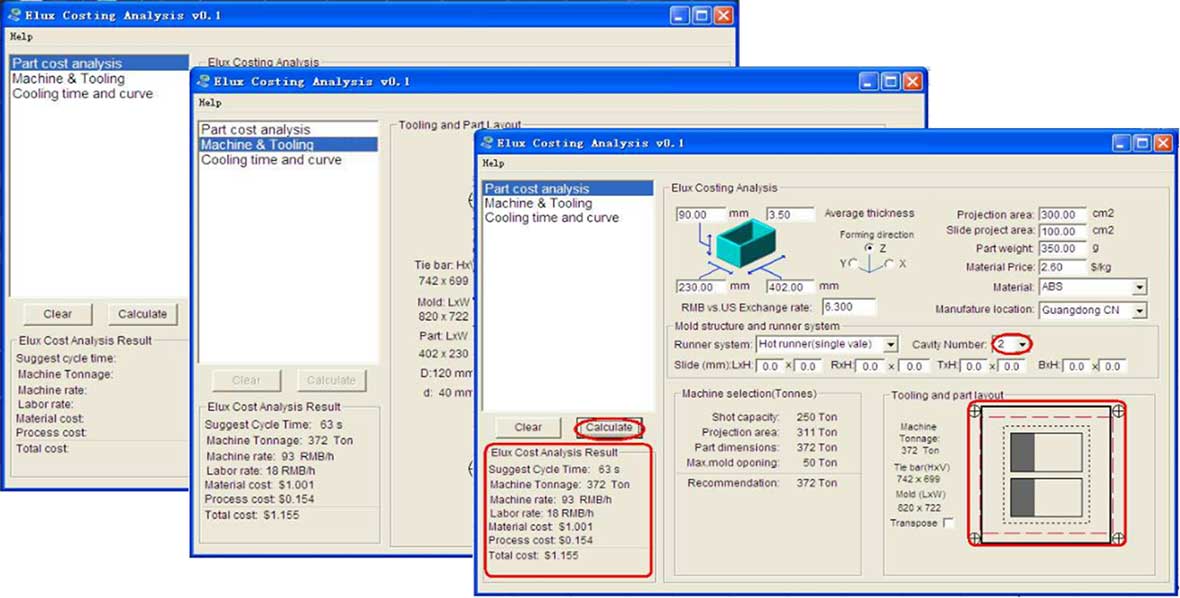Cost Model – definitions and skills
Costimator supports the cost estimating and quoting of over 300 different
manufacturing processes, including all forms of machining, fabricating,
welding, plastic manufacturing, electronics, assembly and more.
The software contains hundreds of pre-built
and industry validated cost models that help estimators quickly and accurately
calculate set-up and cycle times with the highest degree of consistency. These
cost models can easily be modified or created new to better fit the individual
requirements of any manufacturer.


Cost model should cost analysis (“should
costing”) was developed by the Defense Department to assist procurement
officers in determining fair and reasonable pricing and today is embedded in
government procurement practices via the Federal Acquisition Regulations (FAR).
It was adopted by industry beginning in the 1980’s, and today is the dominant
technique used by best in class outsourcing companies like Apple and Cisco.
Should cost analysis involves determining what a product should cost based
on materials, labor, overhead, and profit margin.
Strategic sourcing: What you’re
doing today
The most common procurement method is
strategic sourcing. Using strategic sourcing, supply chain professionals
identify a range of potential suppliers, usually diversifying between size,
capabilities, geography, and many other potential factors. The selected
suppliers are then given the opportunity to quote. Supply chain analyzes the
quotes to make a sourcing decision. This process is referred to as strategic
sourcing. It is most appropriate when the suppliers products/services
being procured are very similar, i.e. when purchasing catalog off the shelf
(COTS) items from distributors.
But what can you do if the item is custom? The
prevailing answer is to use the same techniques used to procure COTS items.
Buyers simply treat the custom package as if it were COTS, submit RFQ’s
to multiple vendors, and compare the quotations. The logic of strategic
sourcing has worked well. By comparing quotations from multiple potential
suppliers supply chain gains insights that can be used to leverage spend. It is
largely responsible for driving offshore procurement as companies search
for the lowest possible comparative quotation. Strategic sourcing is
particularly useful to organizations that lack the resources to effectively analyze
what the product should cost (basically, all of us!).
Should cost: What you’ll
be doing within 5 years

In contrast to strategic
sourcing, should costing begins with an internal assessment of the product’s
expected cost. Generally, engineering helps assess the necessary labor,
procurement gathers the expected material cost, and supply chain assigns
expected labor rates and profit margins. Supply chain collects the costs and
sums them to determine should cost.
In the case of printed
circuit board assemblies (PCBA’s), note that should costing still utilizes
strategic sourcing. This is because PCBA’s cost structure is typically 80%
materials and it is not reasonable (even for Apple and Cisco) to fully analyze
the fabrication cost of every component, so they must cost material
using strategic sourcing techniques.
Most companies do not
conduct should costing for PCBA’s because they believe the process is to
complex for their existing resources. Upon closer inspection, this is
probably not true. Remember, materials is likely 80% of your PCBA
cost. By simply taking control of your material cost you will have achieved 80%
of your should cost goal. You can begin by requiring your suppliers to submit
quotations with fully disclosed material costs (they won’t like this!), then
focusing your resources on negotiating directly with the component suppliers of
the highest cost material. This will require a contract manufacturing
partner who is willing to provide open book costing.
Should cost resources
There are a number of
resources evolving that can assist you with a migration to should costing PCBA’s.
First, we strongly recommend the seminars conducted by Charlie Barnhart
Associates. Charlie and his team conduct periodic seminars that teach you
exactly how electronic manufacturing service companies price their services.
They show you how to compare landed costs from every region in the country.
Additionally, you can receive the results of Charlie Barnhart Associates in
depth quarterly survey of detailed cost elements like labor rates, overhead
rates, and profit rates from around the globe.
Another outstanding
resource for your should cost toolbox is the component benchmarking reports
available from Lytica. They are compiling a database of component
prices using actual OEM quotations as their data source. They apply a number of
statistical techniques to cleanse and normalize the data.
If you would like more information, training, project support and supply chain management please contact us. Email: bensing.yang@sinuoph.com